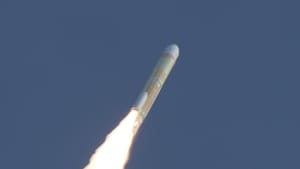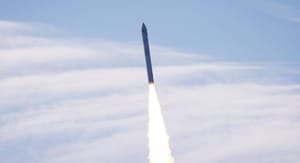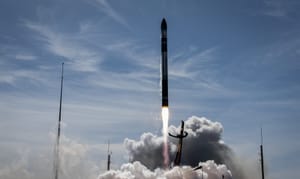
On the 17th of February, Japan's H3 rocket lifted off from the Tanegashima Space Center, in the south of Japan. The rocket was flying in its H3-22S configuration to a sun-synchronous orbit. A few hours after the launch the Japan Aerospace Exploration Agency announced that the launch, payload separations, and its de-orbit maneuvers were a success!
The H3 rocket was carrying three payloads for this launch: VEP 4, CE-SAT-1E, and TIRSAT. VEP 4, or Vehicle Evaluation Payload 4 is a 2,600-kilogram mass simulator and will be separated from the rocket after the second de-orbit burn to test the separating system. CE-SAT-1E is a Earth observation satellite weighing 70 kilograms from Canon Electronics, it is believed the satellite will have a resolution of one meter. TIRSAT is a 3U CubeSat from Japan Space Systems and will be used to test infrared sensors for Earth observation.

This was also the second test mission for the H3 rocket after it failed to light its second-stage engine during its debut flight on the 7th of March 2023, eleven months ago.
What is the H3 rocket?
The H3 rocket is a two-stage launch vehicle that Japan and Mitsubishi Heavy Industries hope to use to replace the H-II rockets. H3 has its components manufactured by Mitsubishi Heavy Industries, IHI Corporation, Kawasaki Heavy Industries, and Toray.

The first-stage is powered by either two or three LE-9 engines generating 150 tons of thrust each for up to six minutes and five seconds. The LE-9 engines burn liquid hydrogen and liquid oxygen.
The second-stage is powered by a single LE-5B-3 engine generating 14 tons of thrust for up to six minutes and twenty-eight seconds. The LE-5B-3 engine burns liquid hydrogen and liquid oxygen.
The first-stage can also have either two or four solid boosters attached when extra performance is necessary. The boosters generate 220 tons of thrust each and burn an unspecified solid propellant for one minute and forty-five seconds.

The H3 rocket is currently planned to fly in four configurations, pictured above, depending on the requirements of the mission and payload size. It is believed that H3 is targeting a price point of fifty million United States Dollars, matching the cost of SpaceX's Falcon 9, but is unclear for what variant.
Mitsubishi Heavy Industries claims the H3 can deliver 4,000 kilograms to a sun-synchronous orbit or up to 7,900 kilograms to a geosynchronous transfer orbit, other payload capability numbers have not yet been stated.
On the pad, H3 is 63 meters tall, with the larger fairing, and 5.27 meters in diameter, not including the added width of the solid rocket boosters. In the H3-24L configuration, the rocket weighs 574,000 kilograms, without a payload, fully fuelled.



